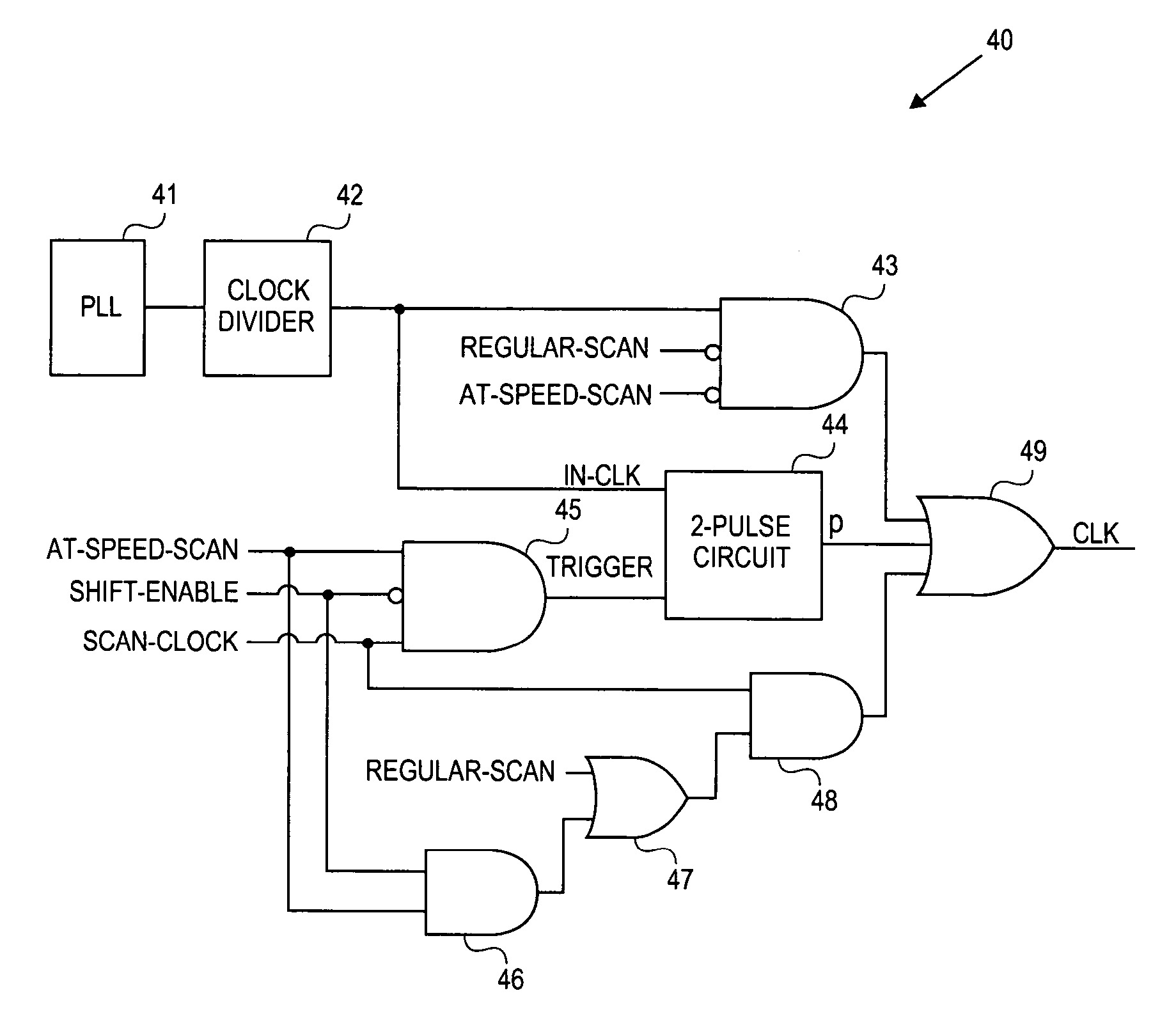Circuit for PLL-based at-speed scan testing
a technology of at-speed scan and circuit, applied in the direction of transmission monitoring, line-transmission details, instruments, etc., can solve the problems of multiple clock domains and difficult simultaneous testing of different domains using scan test vectors, and achieve the effect of ics employing multiple clock domains
- Summary
- Abstract
- Description
- Claims
- Application Information
AI Technical Summary
Benefits of technology
Problems solved by technology
Method used
Image
Examples
Embodiment Construction
[0020] The embodiments of the present invention may be practiced in a variety of settings that scan testing is used. It may be used in integrated circuits having single clock domains or multiple clock domains. Generally, it is understood that some form of software tool, such as an Automatic Test Pattern Generation (ATPG) tool, is used to generate the test vectors. These test vectors include the test signal inputs and expected response from the integrated circuit. These test vectors are typically applied to the integrated circuit using Automatic Test Equipment (ATE). Furthermore, much of the discussion centers on at-speed scan testing, since this technique involves more complexity. However, regular scan techniques may be employed as well for scan testing an integrated circuit. Additionally, the description below discusses operations of various circuitry using signal states, such as activating on high. It is to be noted that equivalent circuits may be designed with other states perfor...
PUM
 Login to View More
Login to View More Abstract
Description
Claims
Application Information
 Login to View More
Login to View More - R&D
- Intellectual Property
- Life Sciences
- Materials
- Tech Scout
- Unparalleled Data Quality
- Higher Quality Content
- 60% Fewer Hallucinations
Browse by: Latest US Patents, China's latest patents, Technical Efficacy Thesaurus, Application Domain, Technology Topic, Popular Technical Reports.
© 2025 PatSnap. All rights reserved.Legal|Privacy policy|Modern Slavery Act Transparency Statement|Sitemap|About US| Contact US: help@patsnap.com



